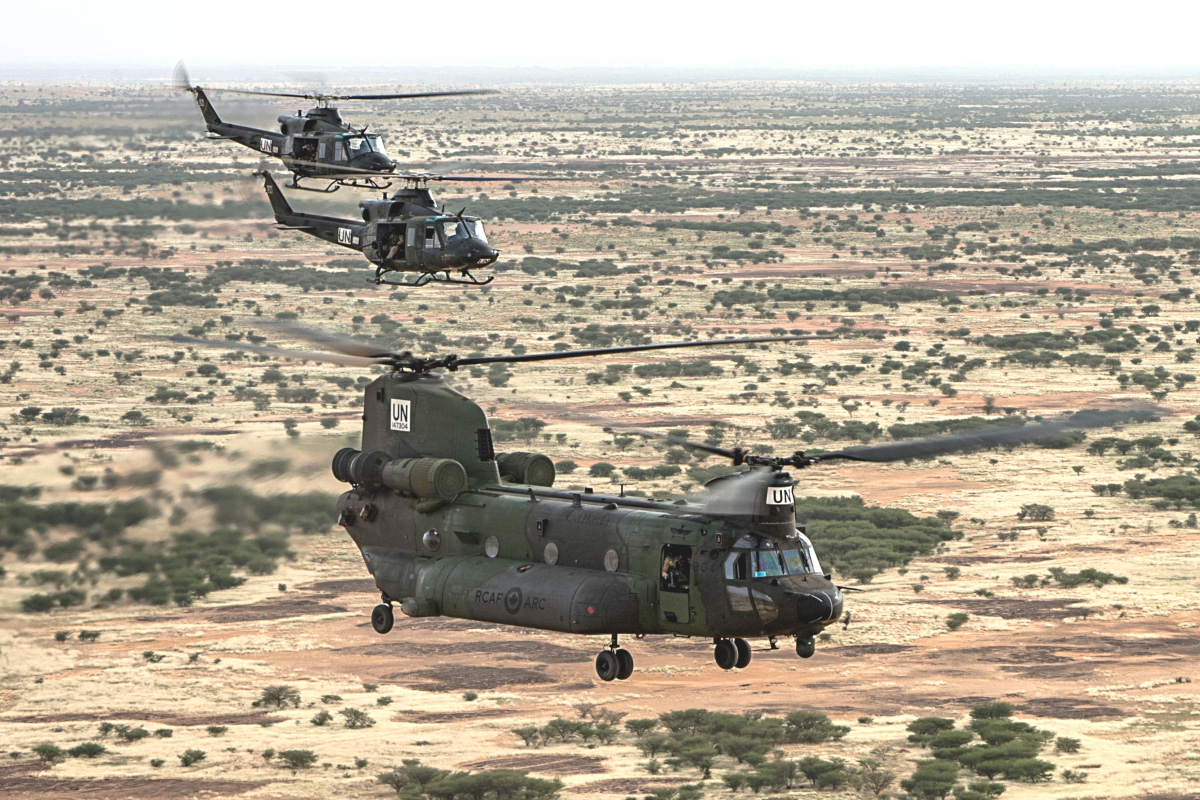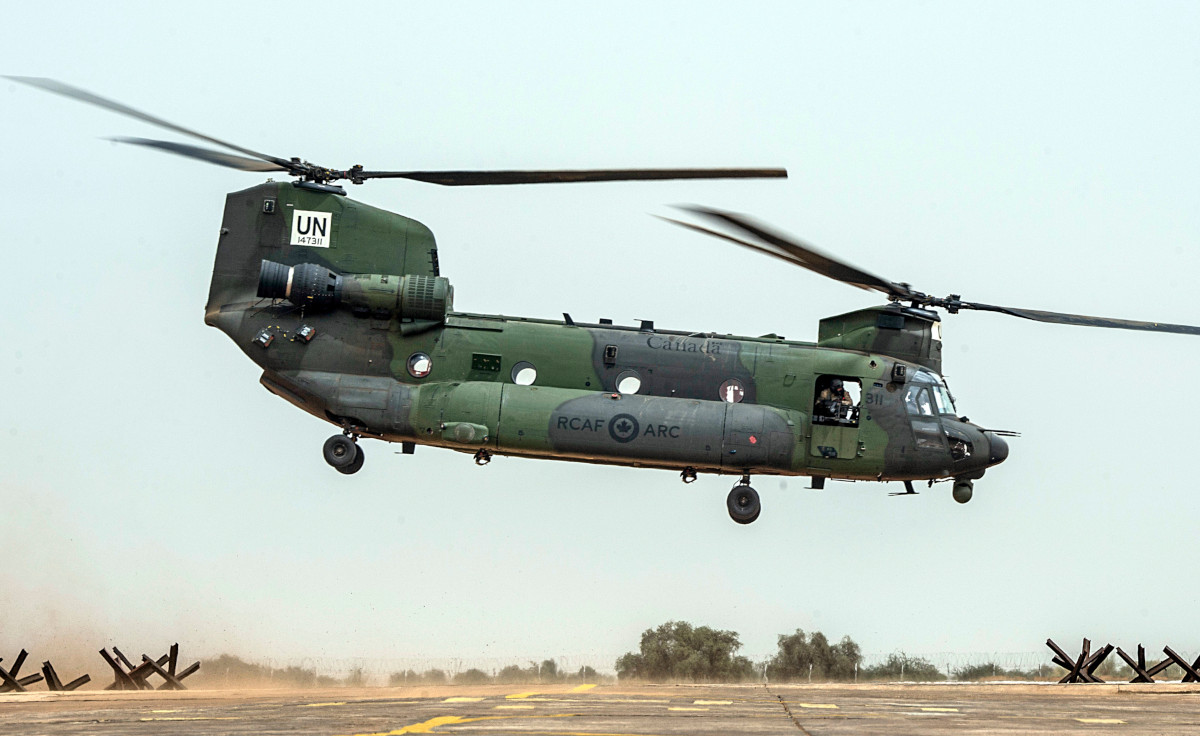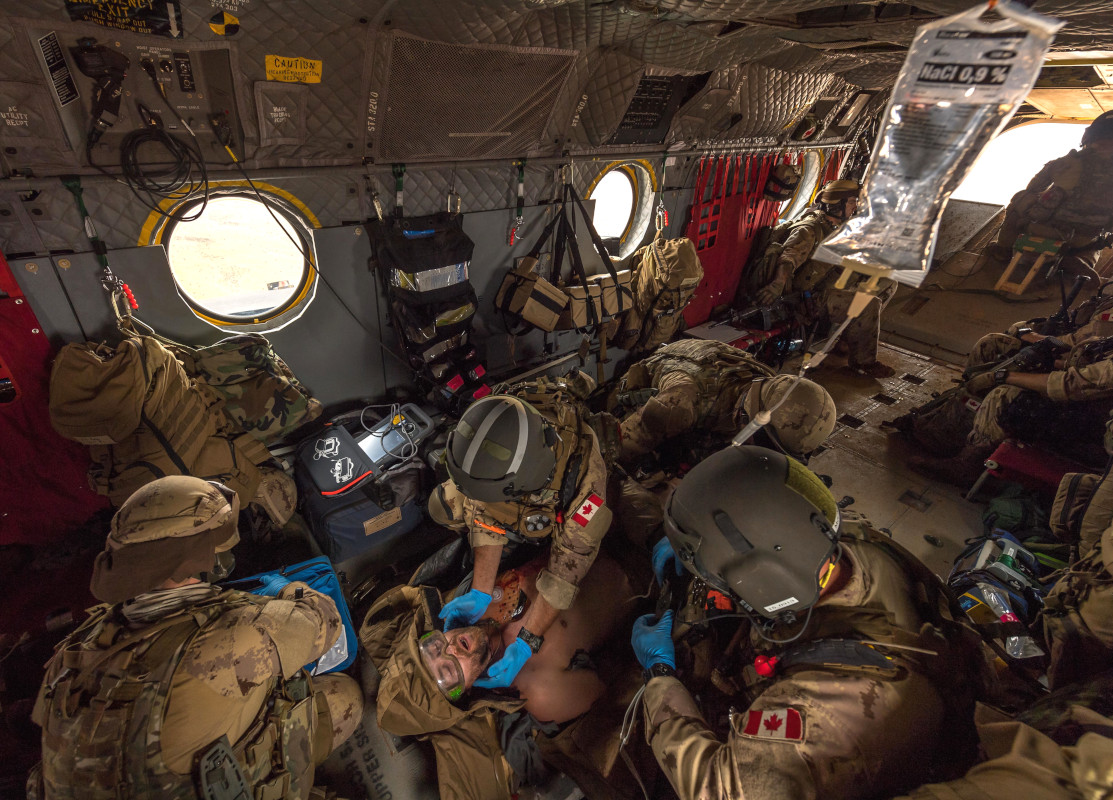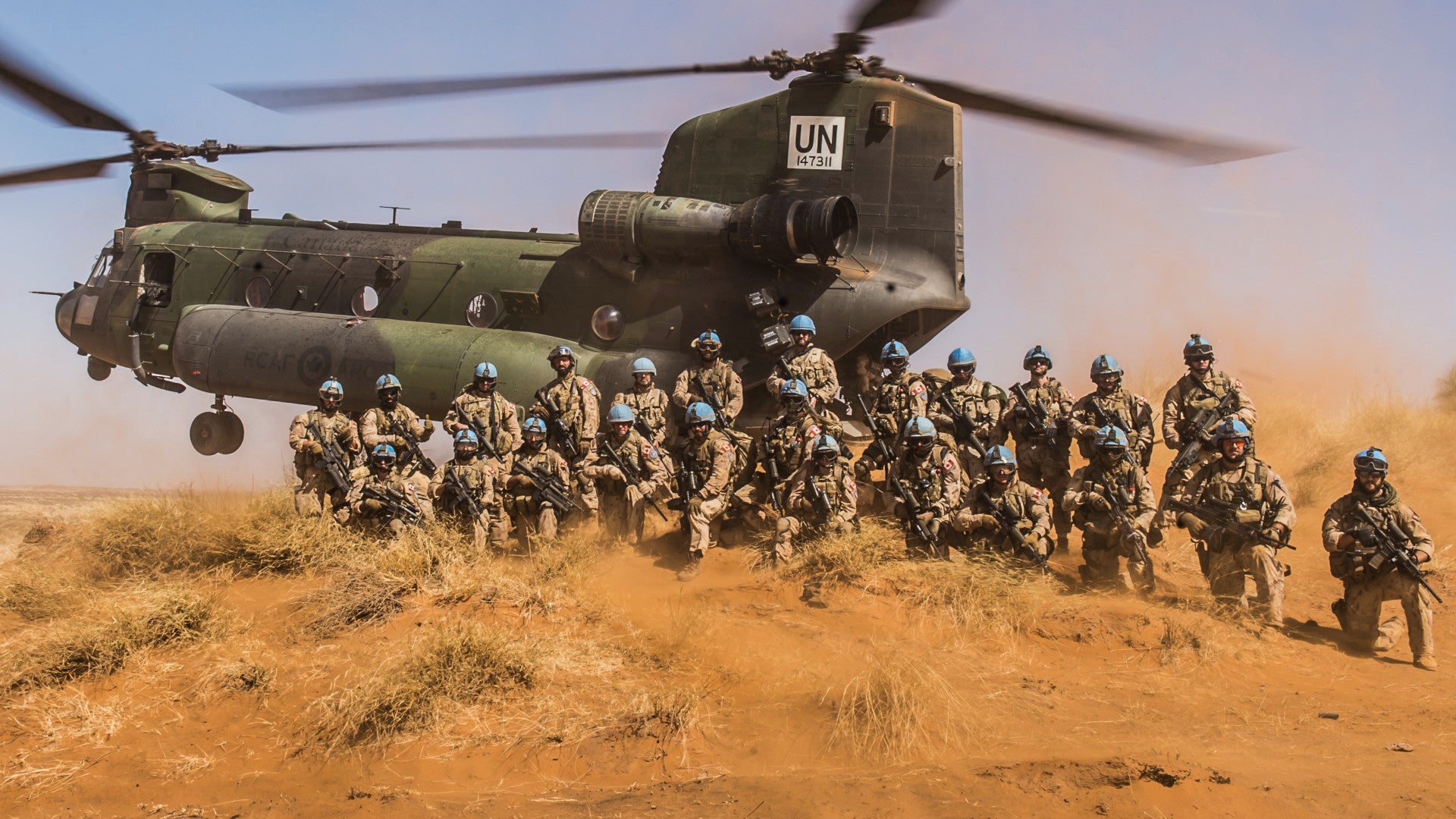One of the most impressive capabilities of the CH-47 Chinook series is the helicopter’s ability to balance its two rear wheels on the edge of a cliff or some other piece of rugged terrain while still hovering, a maneuver known as a pinnacle landing. This allows chopper to more readily get in and out places where it wouldn’t necessarily be able to land otherwise to pick up or drop off personnel and cargo. A Canadian Chinook crew supporting peacekeeping missions in the northwest African country of Mali recently pulled off the move and managed to hold it long enough for two dozen troops to get a picture in front of the hovering helicopter.
The photo op occurred at a small arms training range Canadian forces use situated outside of the northeastern Malian city of Gao on Jan. 2, 2019. Canada’s Task Force Mali deployed to the country in July 2018 and consists of three CH-147F Chinooks, five CH-146 Griffon helicopters, and approximately 250 personnel in total. The unit is there as part of Operation Presence, the country’s mission to support United Nations Multidimensional Integrated Stabilization Mission in Mali, which is better known by its French acronym MINUSMA.
The CH-147Fs have provided an important boost to MINUSMA’s operations since they arrived. In addition to the pinnacle landings, the Chinook family is well known for its ability to operate in high altitude and hot temperature conditions, both of which are present in Mali. The helicopters are also surprisingly fast for their size and payload capacity.
Canada’s Chinooks also have significant additional features over Boeing’s standard CH-47F configuration. Most importantly for operations in Mali, the Canadian examples have extended range fuel tanks similar to the ones on the MH-47 types that the U.S. Army’s elite 160th Special Operations Aviation Regiment flies.

The CH-147F also has a sensor turret under the nose with electro-optical and infrared cameras, giving its crew better situational awareness at night and in other low-visibility conditions. The choppers in Mali have 7.62mm C6 machine guns mounted on either side of the forward fuselage and on the rear cargo ramp for self-defense. Task Force Mali’s CH-146s, armed with Miniguns and .50 caliber machine guns, act as armed escorts during missions.
In addition, the helicopters in Mali are also sporting Northrop Grumman’s AN/AAQ-24 Nemesis directional infrared countermeasures (DIRCM) system. This self-protection arrangement consists of two turreted lasers on the Chinook’s sponsons on either side of the rear fuselage and multiple warning sensors to cue them. When the system spots an incoming heat-seeking missile, the lasers try to blind and confuse its seeker, throwing it off course.

Canada hired Northrop Grumman in 2015 to install these defensive systems on its CH-147Fs, which already had traditional decoy flare launchers. DIRCM systems are becoming increasingly common on helicopters and fixed wing aircraft.
Since at least 2017, the U.S. Army has been working to add a DIRCM capability to its own CH-47Fs, but suffered some initial setbacks in getting the systems to meet its requirements. However, in 2018, pictures emerged showing that the service’s Chinooks were increasingly carrying what appeared to be the AN/AAQ-24 or a variant thereof.

For MINUSMA, helicopters have been an especially vital asset since the peacekeeping operations in Mali began in 2013 due to the country’s austere environment and limited infrastructure, especially in the country’s northern desert regions. On top of that, the mission has become known as the world’s deadliest.
More than 170 peacekeepers have died over the course of the mission and more than half of those fatalities have been the result of hostile fire and roadside bombs. This is a high body count for a mission that does not actually involve direct action against militants, terrorists, or criminal organizations in the country.
The distributed nature of the fighting and the distance between remote outposts and more robust medical care only increases the risk that any casualty will turn into a fatality – something even large militaries have had to contend with during operations in this part of Africa. Helicopters are useful tools for casualty evacuation, in general, but the demand for this capability has been even more pronounced in Mali. Tiny MD500E light attack and scout helicopters from El Salvador, one the longest-running contributions to MINUSMA, have been pressed into the casualty evacuation role at times for lack of alternatives.

But it has been hard for the United Nations to secure consistent and suitable helicopter contributions from its member states. The U.N. force in the country has often had to rely on private contractors to provide any form of support, but those civilian crews generally have more restrictions on where and when they can operate.
The Canadians arrived in 2018 specifically to take over operations from a German-Belgian contingent that was leaving. It’s not surprising that one of the primary missions for the CH-147Fs quickly became casualty evacuation.
“You will get ‘First World’ care in the back of the Chinook, as if you just walked into a Canadian emergency room,” Canadian Forces Colonel Chris McKenna, the commander-in-charge of Task Force Mali, told the country’s Globe News in September 2018. “The level of health care that’s occurring in this helicopter is about the same as you’d get in Vancouver, Quebec City, or Ottawa.”

The Chinook’s spacious main cabin gives medical personnel ample space to work in, making it easier to provide immediate aid as the helicopter speeds toward an actual hospital. The extra room the chopper offers means that the crew can lift a significant number of casualties at once, reducing the total number of sorties, and the total time, it takes to get all of the wounded personnel at the site of an attack to the next level of care.
All of this only improves the chances of medics will be able to save an individual’s life. Other Chinook operators have seized on the helicopter’s capabilities in this role, but it is reportedly a relatively new mission for Canada’s CH-147F crews.
“To watch the medicine that’s occurring in the back of this aircraft, in 40-degree heat, being pitched around the sky and still conducting that level of medicine is nothing short of incredible,” Colonel McKenna explained to Globe News. “This is brand new to Canada and it’s going extremely well.”
Unfortunately, the Canada has insisted that its contribution is temporary and will end after a year, as planned, in July 2019. The mission had been controversial in Canada from the start, with critics accusing Prime Minister Justin Trudeau and his government of deploying too small a force to be useful and that the deployment was politically motivated.
Since he took office in 2015, Trudeau’s political opponents have lambasted him for a variety of defense-related decisions, among other things, especially with regards to the country’s circuitous attempts to bolster or replace the Royal Canadian Air Force’s aging fleet of CF-18 Hornet fighter jets. Canada is heading for another federal election in October 2019, in which the outcome of the Mali deployment and Hornet saga could be factors.
So far, it remains unclear who might replace the Canadians in Mali. There’s no guarantee that whoever might step in to take their place will bring their own Chinooks and be able to provide anywhere near the capability the CH-147Fs have offered peacekeepers for the past six months.
Contact the author: jtrevithickpr@gmail.com
